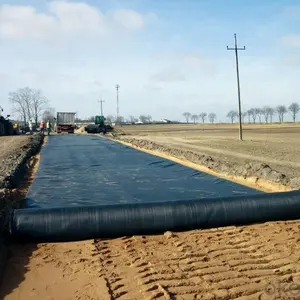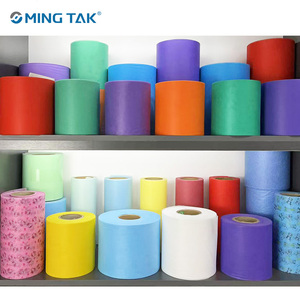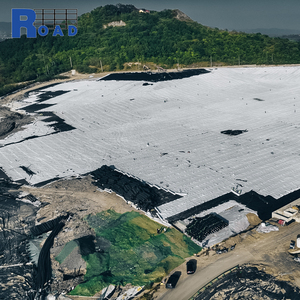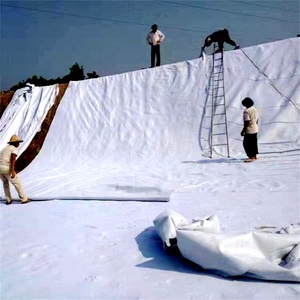
All categories
Featured selections
Trade Assurance
Buyer Central
Help Center
Get the app
Become a supplier

(3945 products available)



























Market Overview: The global nonwoven filtration market, particularly for filtration non woven fabric, has witnessed robust growth, expanding from USD 8.03 billion in 2023 to USD 8.65 billion in 2024. This upward trajectory is expected to continue, with a projected compound annual growth rate (CAGR) of 8.2%, reaching an estimated USD 13.99 billion by 2030, according to Research and Markets. The increasing regulatory pressures for cleaner air and water, coupled with heightened industrial activities, have significantly fueled demand for efficient filtration solutions across various sectors, including automotive, manufacturing, and water treatment. Moreover, the rising awareness of indoor air quality and transmissible diseases has propelled the adoption of non woven filtration materials in both public and private spaces.
Industry Insights: The filtration non woven fabric market is characterized by significant technological advancements, particularly in nanofiber technology and production processes. Innovations in fiber technology have enhanced filter performance and sustainability, contributing to market expansion. Companies are increasingly focusing on developing biodegradable and eco-friendly nonwoven materials to align with consumer preferences and regulatory requirements. The competitive landscape remains dynamic, with key players such as Freudenberg Group and Berry Global Group leading the charge in innovation and market share. However, challenges such as fluctuating raw material prices and environmental concerns regarding nonwoven filter disposal persist. As businesses look to navigate these challenges, the integration of IoT capabilities for real-time monitoring and maintenance prediction presents a promising opportunity for enhancing the functionality of filtration non woven fabrics and addressing customer pain points effectively.
There are several types of filtration non woven fabric available for industrial filtration purposes. This diversity caters to specific filtering needs in distinct applications.
Here are some common types:
Meltblown Non Woven Fabric
Meltblown non woven fabric utilizes the meltblown process, which entails extruding molten polymer resin and grouping the fibers. As a medical-grade filtration material for air and liquid filters, it features a fine fiber diameter, creating a dense, multi-layered structure, resulting in superb filtration efficiency. It is used in face mask filters, diapers, and spectral water filters. It has a very fine fiber structure, which is why it is used for the really fine filtration of liquids and air.
Spunbond Non Woven Fabric
This kind of fabric is made out of synthetic thermoplastics like polypropylene or polyester. Spunbond non woven fabric applies a process wherein continuous filaments are spun and arranged randomly atop a surface. The filaments are then bonded through heat or chemical adhesives. It's widely used in air filtration, liquid filtration, and as a pre-filter layer in multi-stage filtration systems, among other things. This material has a high tensile strength, meaning it's resistant to pulling and bending.
Needle Punched Non Woven Fabric
Needle-punched non-woven fabrics bond fibers by punching them with barbed needles. This punching mat compacts the fiber mesh and entangles the fibers to bond them together. It's especially durable and can be used for air and liquid filtration. The high density of such fabrics means they have good dirt-holding capacity and are very effective.
Carbon or Electrostatic Non Woven Fabric
Electrostatic non woven fabrics are a special kind of non woven fabric that is very effective at filamentation because they can create an electrostatic charge on the surface or inside of the material. They are better than ordinary filters because they can catch more very small particles. These fabrics are exceptional for collecting pollen, dust, smoke, and other very small particles of airborne pollutants. Carbon non woven fabrics use carbon to eliminate gases, odors, and chemical vapors.
SMS Non Woven Fabric
SMS stands for Spunbond-Meltblown-Spunbond. It's a composite structure that goes through the processes of spunbonding and meltblown in this order. The spunbond layers give strength, while the meltblown layer in the middle offers filtration. This structure takes advantage of the strengths of each process so that the final fabric has good filtering abilities and also does not rip easily. It's commonly found in surgical gowns, masks, and other medical products.
Filtration non-woven fabrics have a wide range of uses in multiple industries.
Environmental Industry
In environmental applications, non woven fabrics are used to make filters for purifying water and air. The layers in these fabrics capture pollutants, solid waste, and harmful chemicals from water and keep dangerous dust and tiny pollutants from becoming part of the air we breathe. Because they are really good at filtering and can be used to clean up industrial waste or even oil spills, they are necessary for environmental conservation work.
Food and Beverage Industry
Filtration non woven fabrics are found in many parts of the food and drink business. They are involved in cleaning and removing impurities from water, which is a vital procedure in food preparation and drink creation. These fabrics are also used to filter juices, wines, and beers to remove pulp and clarify them. In addition, they aid in the attainment of the required level of bacteria and other particles in a number of processes, thereby assuring safety and compliance with health standards. They are well known for their ability to efficiently and quickly separate desirable elements from undesirable ones in food preparation.
Medical Industry
Medical uses include surgical masks, respirators, and other medical equipment. Filters made from non-woven fabric serve an important purpose by blocking germs and airborne particles to maintain a clean environment and safeguard patients and medical staff during procedures. They are found in air purification devices and are used to filter air before it is released into clean areas of hospitals or laboratories. Non woven fabrics are also essential in projecting and separating liquid filtration in medical operations safely.
Chemical Industry
Non woven fabrics are extensively used in filtration applications within the chemical industry. They are used as filter bags to purify chemicals by removing solid particles and impurities. These non-woven filters are essential for ensuring the quality and purity of chemicals used in various processes. They are also used in the filtration of hazardous liquids and gases. Non woven fabric filters provide a safe and effective way to protect both equipment and personnel from harmful exposure.
Pharmaceutical Industry
Filtration non woven fabrics find application in a variety of pharmaceutical processes. These include the purification of drugs and solutions, the removal of bacteria and other contaminants from drug formulations through sterilization filters, and air filtering in cleanroom environments. Non woven fabrics play a critical role in the production of surgical and wound care products, ensuring sterility and safety.
Industrial Manufacturing
Manufacturing industries rely on non woven fabrics in diverse processes. These are used in the filtration of essential liquids like oils and fuels, ensuring machinery operates optimally by removing impurities. Non woven air filters are deployed in ventilating systems to clean the air before intake and release. They are highly valued for their durability and efficacy in capturing and separating particulate matter, dust, and contaminants.
Regular Inspection
It is critical to routinely inspect the non woven filtration non woven fabric for any signs of wear or damage. This can include holes, tears, or noticeable sediment accumulation. Depending on the application, maintenance can be weekly, monthly, or yearly. Observing the filter's condition regularly can address problems before they lead to significant downtime or reduced efficiency.
Monitoring Filter Performance
Keep an eye on how well the filter is working. If it takes longer for air or liquid to move through, or if there's more dirt on one side compared to the other, it might need to be cleaned or replaced. Many systems have measures to track how well the filter is doing. This checks filtration ability and alerts users when it's time to switch out the filter or clean it.
Cleaning or Replacing
Based on the results from inspections and monitoring, filtration nonwoven fabric should either be cleaned or replaced. If there is a lot of dirt stuck in the fabric, it may need to be cleaned. In situations where the material is worn out or dirt is imbedded too deep, a new non woven fabric filter might be necessary.
Proper Storage
If the nonwoven filter fabric needs to be stored for future use, it should be kept in a dry, clean location away from sunlight and extreme temperatures. Also, it should be stored in a plastic or cloth container so that no dirt or bugs get into it. Keeping the filter fabric in good condition for later use is essential to having a new filter ready when needed.
Installation of New Filters
Follow the first step to changing the filter: Look at the new filtration non woven fabric for any rips or mistakes. Make sure only good materials are used. Then, clean the area around the filter so nothing dirty gets through. Turn the filter so the arrow points toward the system. Put the filter in the right spot and press it against the sides. Close the filter door tightly when done. After this, test the system. Check how well the filter is working and look for any air leaks.
Material Quality
One needs to choose non-woven fabrics made from premium materials, such as polypropylene or polyester. Moving forward, one must ensure that these materials are of industrial strength to handle rigorous filtration tasks. The fabric's density and thickness should be inspected to certify that they meet the necessary filtration standards. To enhance fabric integrity, check whether it has undergone additional processes to bolster strength and durability.
Particle Filtration Efficiency
The primary purpose of filtering non woven fabric is to filter particles efficiently. So, when selecting such fabric, one has to look for the micron rating, as it determines the smallest particles that the fabric can filter. The right micron size depends on the application's specific filtration requirements. Furthermore, non woven fabric ought to be tested to guarantee that it filters airborne or liquid pollutants effectively.
Chemical Resistance
This is particularly important in chemical or industrial environments. The filtration fabric must resist degradation if exposed to certain harmful substances, including acids and solvents. One should perform adequate research to ascertain the fabric's resistance to the specific chemicals it may encounter while working.
Safety Standards and Certifications
Certifications and standards are non-negotiable when it comes to safety. Depending on the industry, filtration non woven fabrics should meet particular hygiene and safety requirements. For example, in the medical field, the material must be sterile and certified by organizations such as the FDA or CE. In the food and beverage industry, it must meet FDA standards for food contact. One should look for fabrics with certifications that match its industry needs.
Durability and Maintenance
The durability of the non woven fabric influences its effectiveness and safety for a long time. This is because long-lasting fabric reduces the need for replacements and saves money in the process. One should ascertain that the material is sturdy enough to endure stress, as this will help it maintain its filtering ability for a long time. Furthermore, they should be effortless to maintain to ensure continuous performance.
A1: Nonwoven filter media refers to fabrics designed and constructed specifically for filtration applications. Often made from synthetic fibers, they are composed of fine, interconnected fiber networks that result in a unique structure. This allows them to trap and separate undesirable airborne particles, liquids, and contaminants of various sizes. Nonwoven filter media is widely used in environmental protection, medical, and industrial applications.
A2: Filtration non woven fabric possesses many advantages. They include flexibility in design, high filtering efficiency, suitability for mass production, cost-effectiveness, and durability. The good news is they can also be recycled depending on the type of fiber used.
A3: The number of times the filter fabric can be used and the duration it lasts depends on lots of variables. These include the environment in which it is used, the particles it filters, and the degree of filtration it must achieve. In certain situations, filters are designed to be replaced after several months. In others, they can be rewashed a few weeks or months.
A4: A few types of non woven fabric can be exposed to high temperatures. These fabrics are made from fibers such as polyester or polypropylene. They can tolerate elevated temperatures without compromising structural integrity and filtering efficiency. Therefore, it's important to ascertain that the non woven fabric is suited for a particular application. This is especially true if that application involves significant thermal exposure.
A5: Some types of non woven filter fabric can be exposed to UV rays. These fabrics are engineered to resist the damaging effects that result from prolonged exposure to sunlight. These include degradation, loss of strength, and decreased filtering efficiency. Examples of such UV-stabilized non-woven fabrics include those made from specially treated polypropylene or polyester fibers.